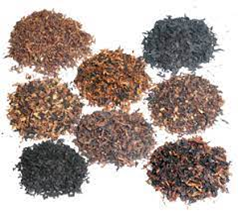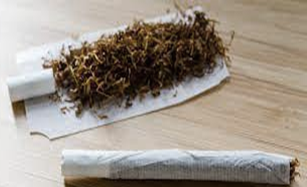Tobacco Products Covered in Tobacco 21 Law
Tobacco Products Covered in Tobacco 21 Law
FDA’s approach to regulating tobacco products is grounded in science and uses the full power of the law to protect public health.
FDA’s Center for Tobacco Products regulates the following tobacco products:
| Cigarettes: The basic components of most cigarettes are tobacco, chemical additives, a filter, and paper wrapping. Cigarettes are responsible for most of all tobacco-related disease and death in the United States. Smokers are exposed to a toxic mix of over 7,000 chemicals when they inhale cigarette smoke. The harmful chemicals in cigarette smoke can damage nearly every organ of the body. Nonsmokers are exposed to many of these same chemicals through secondhand smoke. |  |
| Cigars: A cigar is a roll of tobacco wrapped in leaf tobacco or in a substance that contains tobacco. Most cigars are combustible tobacco products. They vary in size—from smaller cigars, such as little filtered cigars or cigarillos, to larger ones, such as large so-called premium cigars. Cigars are not a safe alternative to cigarettes and cigar smoke is at least as toxic as cigarette smoke, if not more. Large cigars can deliver as much as 10 times the nicotine, two times the tar, and more than five times the carbon monoxide of a filtered cigarette. There are cigar products available on the market that resemble cigarettes in size and shape but are labeled as “little cigars” or “filtered cigars.” Little filtered cigars as well as cigarillos might contain candy or fruit flavors that appeal to adolescents and young adults. In addition, young adults may think that cigars are less addictive and present fewer health risks than cigarettes, but cigars may be worse. |  |
| Dissolvables: Most dissolvable tobacco products dissolve in your mouth and do not require spitting or discarding of the product. Dissolvable tobacco products are noncombustible tobacco products. Dissolvables can be sold as lozenges, strips, or sticks, and some may look like candy. Like other tobacco products, dissolvable tobacco products contain nicotine and other harmful and potentially harmful constituents. Nationwide, an estimated 80,000 high school students used dissolvable tobacco in 2014. |  |
| Hookah Tobacco: Hookah tobacco (also known as waterpipe tobacco, maassel, shisha, narghile, or argileh) is a type of combustible tobacco that is smoked with a hookah (waterpipe). Hookah (waterpipe) smoke exposes people to the addictive chemical nicotine and contains many of the same toxic chemicals that are in cigarette smoke. In fact, research shows that waterpipe smokers may absorb even more of the harmful chemicals found in cigarette smoke because smoking sessions are typically longer. A typical one-hour hookah session involves inhaling 100–200 times the volume of smoke from a single cigarette. Waterpipe smokers are at risk for the same kind of diseases caused by cigarette smoking and may absorb even more toxic chemicals like carbon monoxide than cigarette smokers. |  |
| Nicotine Gels: A nicotine gel is a tobacco product that contains nicotine and can be absorbed through the skin. Nicotine gel is a noncombustible tobacco product.
|
 |
| Pipe Tobacco: Pipe tobacco is generally loose-leaf tobacco burned in a traditional smoking pipe with a bowl. Pipe tobacco is a combustible tobacco product. Nationwide, 1.4 percent (an estimated 190,000) of high school students currently smoke pipes. |  |
| Roll-Your-Own Tobacco: Roll-your-own tobacco is loose tobacco that the user places inside rolling paper and burns. It is a combustible tobacco product. Roll-your-own tobacco products are not safer than other types of cigarettes. Just like with other types of cigarettes, the user burns the tobacco and inhales harmful chemicals. Tobacco smoke contains a toxic mix of over 7,000 chemicals. The harmful chemicals in tobacco smoke can damage nearly every organ in the body. Nonsmokers are exposed to many of these same chemicals through secondhand smoke. |  |
| Smokeless Tobacco Products, including Dip, Snuff, Snus, and Chewing Tobacco: Most smokeless tobacco use involves placing the product between the gum and the cheek or lip. Smokeless tobacco is a noncombustible tobacco product. There are two main types of smokeless tobacco that have been traditionally marketed in the United States: chewing tobacco and snuff, including snus. Chewing tobacco is cured tobacco in the form of loose leaf, plug, or twist. Dry snuff is loose finely cut or powdered dry tobacco that is typically sniffed through the nostrils. Moist snuff and snus are cut tobacco that can be loose or pouched and placed in the mouth. More than 30 chemicals in smokeless tobacco are linked to cancer —smokeless tobacco causes cancers of the mouth, esophagus, and pancreas. Some dissolvable tobacco products can be classified as smokeless tobacco products. |  |
| Vapes, E-Cigs, Hookah Pens, and other Electronic Nicotine Delivery Systems (ENDS): Vapes, vaporizers, vape pens, hookah pens, electronic cigarettes (e-cigarettes or e-cigs), and e-pipes are some of the many terms used to describe electronic nicotine delivery systems (ENDS). ENDS are noncombustible tobacco products. These products use an “e-liquid” that may contain nicotine, as well as varying compositions of flavorings, propylene glycol, vegetable glycerin, and other ingredients. The liquid is heated to create an aerosol that the user inhales. ENDS may be manufactured to look like conventional cigarettes, cigars, or pipes. Some resemble pens or USB flash drives. Larger devices, such as tank systems or mods, bear little or no resemblance to cigarettes. |  |
| Examples of components and parts of ENDS include: |  |